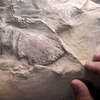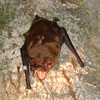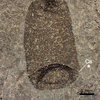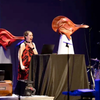Coming Out of Their Shells: a New Look at the Undersides of Trilobites

An artist’s rendering of two species of trilobite in the instant before they were buried by volcanic ash. (source: University of Poitiers)
Post Author - Erik Wells
For hundreds of millions of years, trilobites survived and even thrived during events that proved cataclysmic for other species, from ice ages to continental shifts. With a reign 1,000 times as long as the current span of human existence, there has been no shortage of trilobite fossils for paleontologists to explore. However, these studies have largely been limited to the trilobite’s tough exoskeleton, with only limited knowledge of its soft underside... until now. A recently published paper has revealed findings borne from a 2015 dig at the High Atlas Mountains in Morocco. A team led by geologist Dr. Abderrazak El Albani uncovered a trove of perfectly preserved trilobites who were frozen in much the same way as the citizens of Pompeii.
500 million years ago, during the Cambrian Period, the High Atlas Mountains region was a shallow marine environment surrounded by explosive volcanoes. During one eruption, a sudden, powerful burst of activity swiftly killed all local trilobites, burying them and the surrounding area under a layer of ash in the process. Some had curled up in fear while others were frozen mid-motion as if they were trying to scuttle away. One such trilobite was covered in even smaller organisms that stowed away on its shell in the hopes of making an escape. Over time, the ash turned to stone. Half a billion years later, it has finally been cracked open.

3D rendering of the underside of a Protolenus trilobite. (source: University of Poitiers)
Thanks to the fine-grained particles of the volcanic ash, the impressions of the entombed trilobites are incredibly detailed, allowing scientists to at last examine features they could only theorize about before. With the help of micro-CT scans and X-ray imaging, scientists can use 3D models to observe particularly delicate features in even greater detail, such as antennae, hairlike bristles on their walking legs, and digestive tracts. One trilobite was even found with an enlarged digestive tract, due to ingesting a large amount of sediment at the moment of burial.
Scientists also discovered new features that were previously not considered part of the trilobite anatomy, such as small appendages used specifically to shovel food into their narrow mouths. They also found evidence of the labrum, a small fleshy lip that some modern arthropods use to hold food in place, thereby filling in a missing rung on the ladder connecting trilobites to modern arthropods. While not all of these features are common across all trilobites, the study has nonetheless given paleontologists a valuable head start for when they discover their next species. If the site is preserved as carefully as the specimens have been, Dr. El Albani reminds us, then paleontologists could be making those discoveries for centuries to come.
Featured Product
Joe Frazier Boxing Glove
Cool Things!

Is “Paul is Dead” Dead?: Unpacking One Of Pop Culture’s Most Enduring Conspiracy Theories

Scientists Discover Hooves and Skin in Preserved Dinosaur "Mummies!"
A dinosaur discovery just in time for Halloween! In a new analysis of a group of fossils from Wyoming, Scientists have determined this group of fossils are dinosaur “mummies,” with preserved skin and even hooves.

Scientists Record a Bat Catching Birds Mid-Flight!
Bats, birds, screeches, oh my! In a reverse-Hitchcock twist, a new study reveals that a species of European bat catches and eats birds mid-flight.
Specimen Deep Dives

The House that Ruth Built: The Story of the Old Yankee Stadium

The Queen of the Skies: the Story of the Boeing 747

Old Ironsides: The USS Constitution and the Start of the U.S. Navy
Long Form Articles

The Artist Behind the Macintosh: Susan Kare and Apple Computers
While the two Steves, Jobs and Wozniak, are the most well known faces behind Apple computers, equally important to the products and culture of the company were those who crafted the experience of using their computers through design. The most notable of these visual architects was Susan Kare, a designer responsible for “humanizing” Macintosh computers.

Can I Lick It? Yes You Can!
Have you ever been unable to tell if a fossil was really a fossil, but you were too embarrassed to admit it? Have you ever wanted to lick a fossil just because, but you didn’t want to risk judgment from your peers? Well, good news! You can kill two birds with one stone! Licking a fossil can actually help you determine if it’s the real deal or just another rock.

Is It Legal To Own a Meteorite: How to Start Your Outer Space Collection!
Meteorites are some of the rarest geological specimens to be found on Earth. Of course, since these stones are not of our world, purchasing them can sometimes be a confusing process. Is it legal to own a meteorite? In short, yes! Read on for help starting your cosmic collection!



















